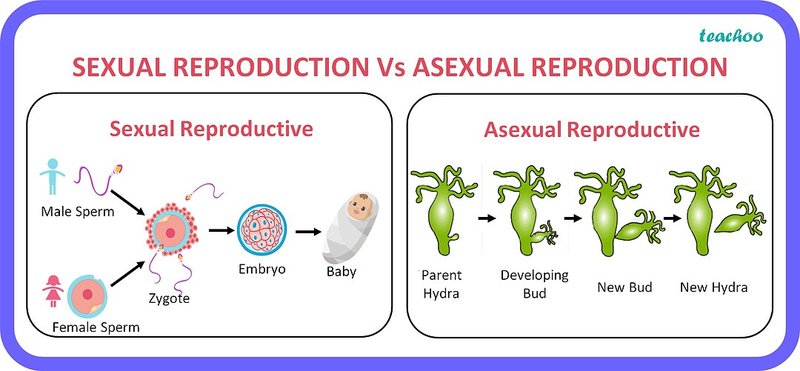
Understanding Bobbit Worms
Before we get into their reproduction methods, it’s essential to know a bit more about bobbit worms themselves. Imagine a long, segmented body, almost like a snake, but living in the sand or mud of the ocean floor. Bobbit worms are part of the polychaete family, which means they have bristles and segments along their bodies, sort of like a natural backpack filled with tools.
They are mostly found in tropical and subtropical waters, hiding in tubes they create from sand and debris. Picture them lurking just below the surface, waiting to strike at unsuspecting prey. Their hunting method involves extending their powerful jaws, which can snap shut with surprising speed, allowing them to capture fish or crustaceans. This unique predatory behavior highlights their adaptability, setting the stage for how they reproduce.
Sexual Reproduction: The Mating Game
Now, let’s talk about how bobbit worms reproduce sexually. This method is akin to dating in the human world, where finding a mate is essential for passing on genetic material. Bobbit worms are generally **dioecious**, meaning there are distinct male and female individuals. This separation ensures genetic diversity, which is crucial for the survival of the species.
During the mating season, which tends to happen during specific times of the year, males and females release their sperm and eggs into the water. It’s like a synchronized dance of life, where the timing is everything. After fertilization, these eggs develop into larvae, drifting with the ocean currents for a time before settling on the ocean floor to grow into adult worms.
Here’s the thing: this method allows for a broader genetic pool, enabling bobbit worms to adapt better to their environments. This can be critical for species survival in changing ocean conditions.
Asexual Reproduction: A Unique Approach
On the flip side, bobbit worms can also reproduce asexually, which is somewhat of a marvel in the animal kingdom. This method doesn’t require a partner; instead, it involves a process called **budding** or **fragmentation**. Imagine if you could grow another version of yourself just by parting ways with a part of your body. That’s essentially what happens here.
When conditions are right, usually when food is abundant, a bobbit worm may split its body into two portions. Each part can regenerate into a complete worm. This promises a quick population increase, especially in a favorable environment. If you’ve ever seen plants propagate by sending out runners, you can think of it in a similar way—where one can quickly become many.
One of the fascinating aspects of this asexual method is that it allows worms to populate areas rapidly when conditions are just right. It’s a survival tactic that showcases how adaptable these creatures can be.
Advantages and Disadvantages of Each Method
Both sexual and asexual reproduction methods have their pros and cons. Understanding these can shed light on why bobbit worms have evolved to use both techniques.
**Advantages of Sexual Reproduction:**
- Genetic Diversity: It allows for a mix of traits, which is beneficial in dynamic environments.
- Adaptability: Offspring may be better suited to deal with environmental changes.
**Disadvantages of Sexual Reproduction:**
- Time and Energy: Finding a mate requires energy and might limit reproduction opportunities.
- Environmental Risks: Release of gametes in open water means many eggs and sperm may not successfully meet.
**Advantages of Asexual Reproduction:**
- Speed: Allows for quick population growth in favorable conditions.
- No Mate Required: Perfect for isolated or small populations.
**Disadvantages of Asexual Reproduction:**
- Lack of Diversity: Offspring are clones, which may limit adaptability to changing conditions.
- Vulnerability: If environmental conditions change, a homogeneous population may struggle to survive.
The Role of Environmental Factors
Environmental conditions play a significant role in determining whether bobbit worms reproduce sexually or asexually. Factors such as food availability, temperature, and habitat stability can all influence their choice of reproduction method. Picture this scenario: if there’s an abundance of food, the worms might opt for asexual reproduction, taking advantage of the plentiful resources.
Conversely, if conditions are harsh or food is scarce, these worms may lean toward sexual reproduction to ensure genetic diversity. This makes sense, right? More genetic tools can help future generations adapt to stressful conditions. Honestly, it’s a clever strategy that shows just how in-tune these creatures are with their environments.
Why Understanding Bobbit Worm Reproductive Strategies Matters
Studying how bobbit worms reproduce can tell us a lot about marine ecosystems and resilience. By understanding their habits, we gain insight into how species adapt to environmental changes. This knowledge is especially crucial as we face challenges like climate change and habitat loss.
Researchers can also look at these reproductive methods to better understand the health of ocean environments. Changes in bobbit worm populations could indicate shifts in ocean health, serving as a warning sign of broader ecological issues. When you think of it this way, it’s a reminder that every creature plays a role in the grand tapestry of life.
Bobbit worms are more than just their striking appearance or aggressive feeding—they’re a prime example of nature’s versatility. Their ability to reproduce both sexually and asexually showcases significant adaptability, which is vital for survival in a changing world. Understanding how bobbit worms reproduce enriches our knowledge of marine biology and highlights the interconnectedness of life beneath the waves.
So, the next time you think about the ocean, remember the bobbit worm and its complex ways of ensuring the continuation of its species. It’s a vivid reminder that the ocean is filled with surprises, and there’s always something new to learn about its inhabitants. Whether through cooperation or solitary means, life finds a way to persist and thrive.
